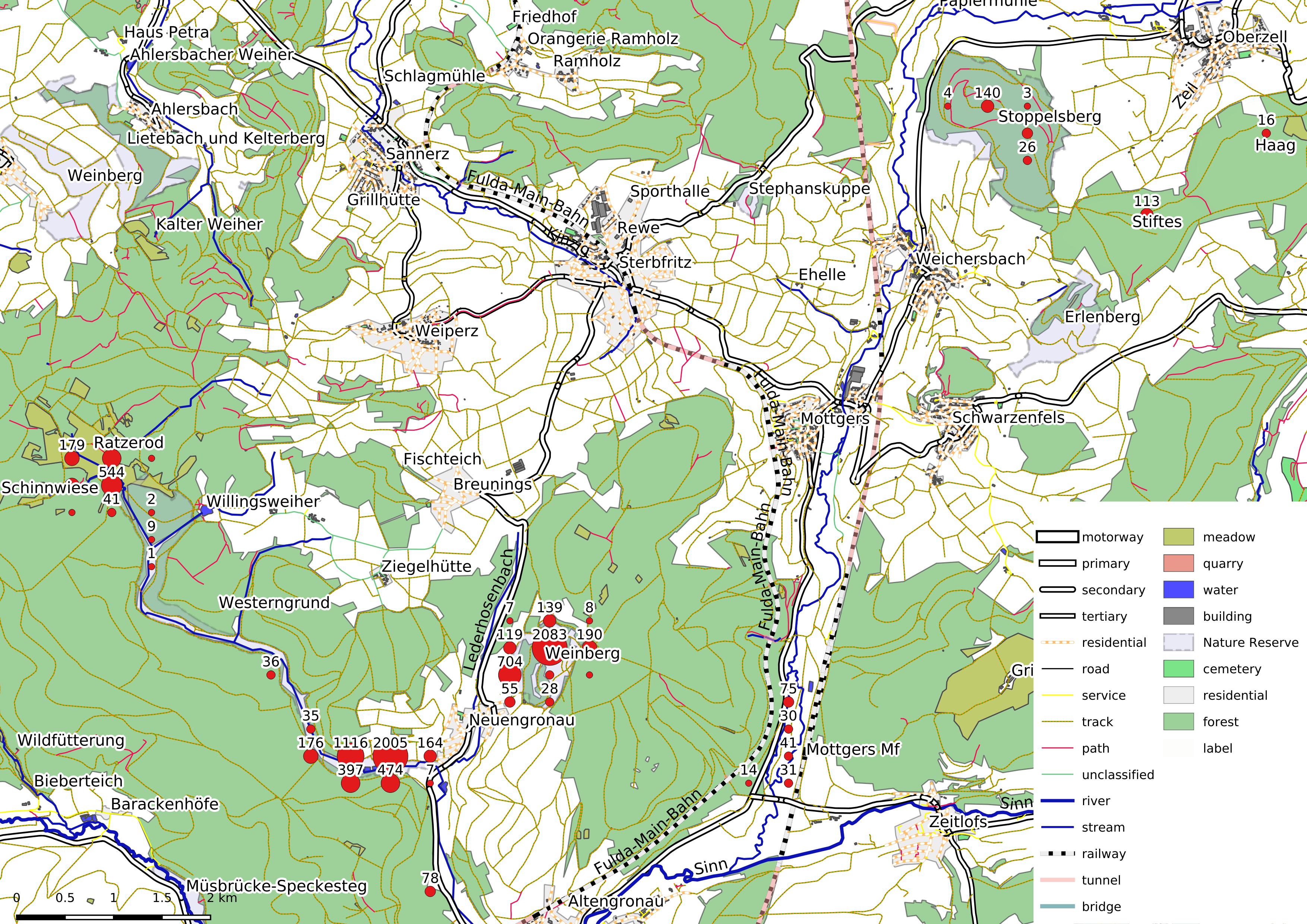
Number of Sampled Specimens |
Up |
 |
Map data were extracted from openstreetmap and rendered with QGIS.
In the map you will find all the names of my sampled areas, except the "Garden". The whole area is on bunter with very nutrient poor soil and consequently almost no agriculture. The only exception is the "Weinberg", which is on limestone, but as an island it is too small to develop a characteristic "Mesobromion". The "Garden" is a place as close to nature as a garden can be, but still we use fertilizer and grow "unnatural" species like potatoes. The "Westerngrund" is a very lonely stream valley, almost without human influence, except hunters, foresters and some cattle as a measure of conservationists. The "Ratzerod" is a system of moist and nutrient poor meadows which are no more economical today. Formerly at this place was a settlement, but already 200 years ago no traces were left. "Schmale Sinn" is actually the name of the stream, and I caught flies there, because for the more famous "Sinnwiesen" below I'd have to buy another permit. "Wildacker" is a german word for which I can't find an english translation: a meadow or otherwise cultivated area in a forest to attract and shoot game.
For the red data points the whole area was divided into a quadratic grid of roughly 250m. Every point shows the number of specimens caught (the size of the points is proportional to the logarithm of the number) and the number is given to the upper right of every point.
 |
The Simpson index is the probability that any two specimens in a sample or population belong to the same species. In the map above I used the same grid as for the number of specimens (~250m), but I omitted all places where the number of species is below 30. The numbers given are the Simpson Index in % and the size of the points is proportional to the inverse of the index: the larger the point, the higher the diversity.
What can tentatively be claimed as result are the two "diversity hotspots", with values of 1.27 and 1.65. Both places are small woods of Alnus glutinosa around a stream, possibly close to the natural vegetation to be expected without human interference. And another interesting point: the Simpson index of my garden (not shown) is 3.3%, which indicates a comparably low diversity. But don't forget to read my criticisms in the next chapter.